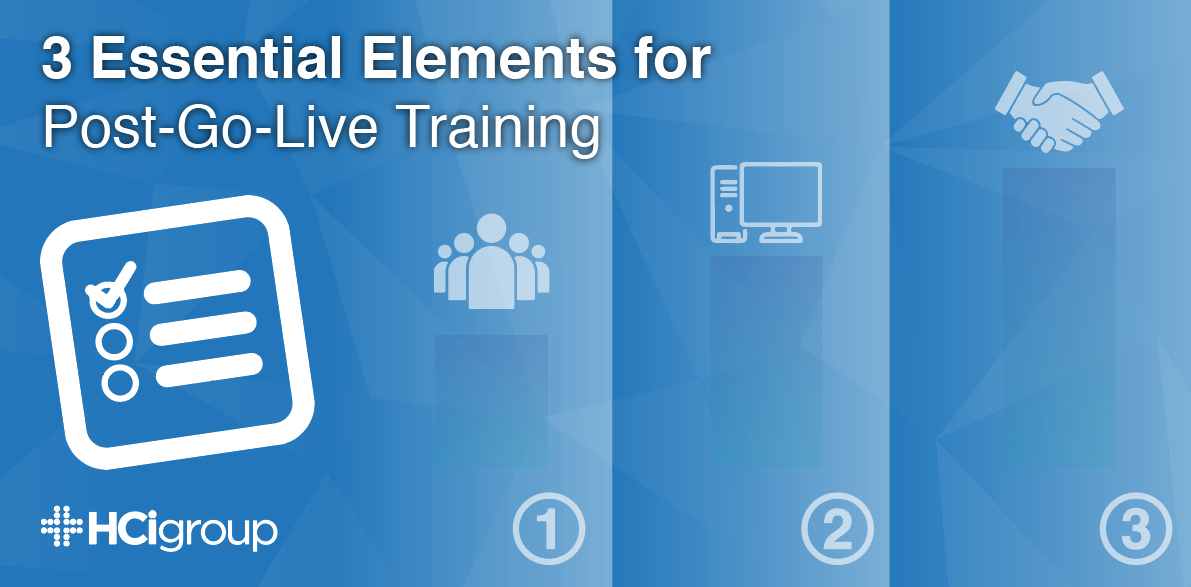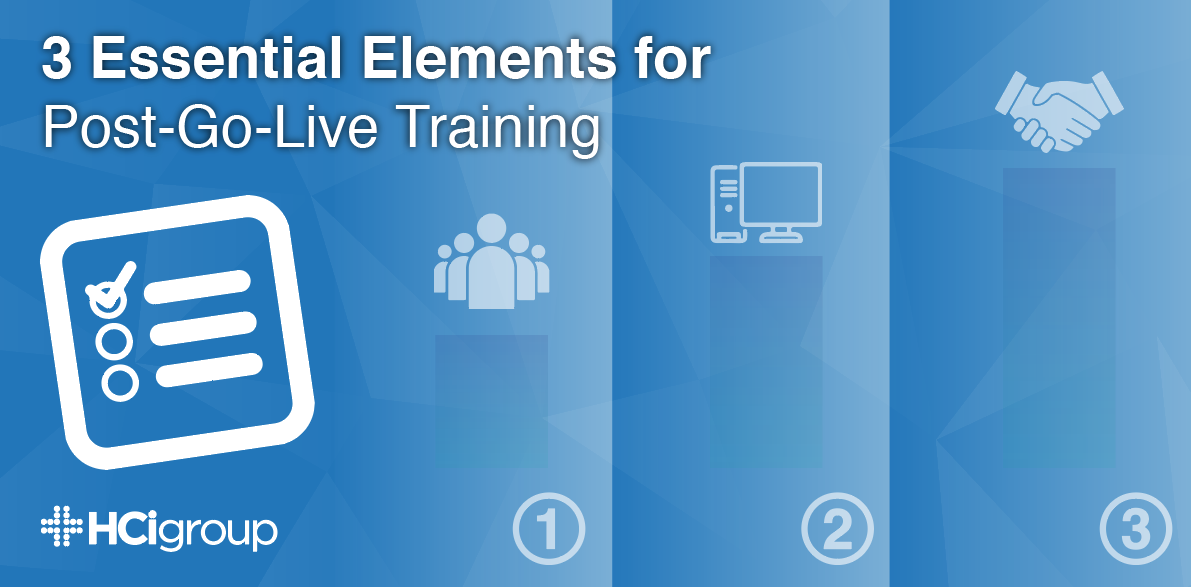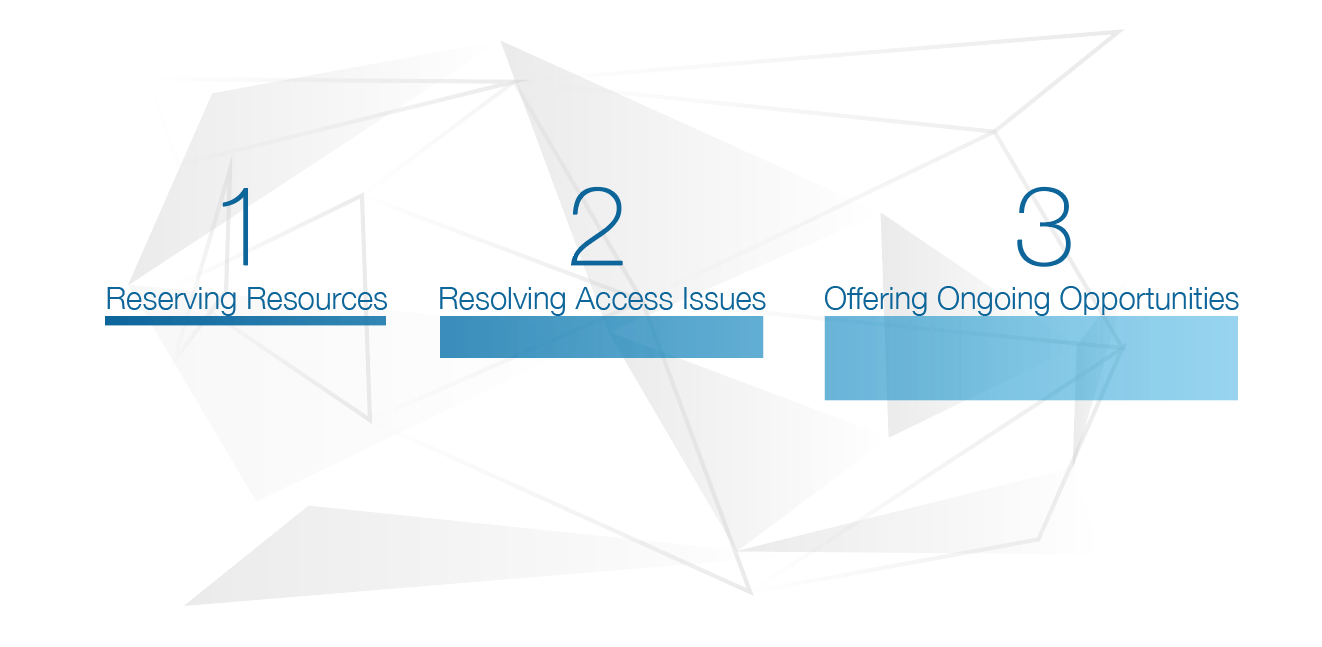3 Essential Elements for Post-Go-Live Training

 EHR training shouldn’t end with go-live.
EHR training shouldn’t end with go-live.
Thorough, ongoing training is essential for maximizing the return on your investment in your electronic health record system.
Increases in efficiency, improvements in care, and reductions in costs come through the continuous learning, refinement and implementation of best practices in using your EHR. Effective post-go-live training helps you reap these benefits.
Unfortunately, such training is commonly undervalued. Organizations usually don’t grasp its importance, treating it almost as an afterthought.
Post-go-live training is usually the last need that hospitals address before go-live, which leaves organizations scrambling to meet last-minute training needs while users struggle to learn the system that is vital to their jobs.
Maximize the ROI on your EHR by covering these three areas in your post-go-live training plans.

1) Reserving Post Go-Live Training Resources
Hospitals often rush to reserve trainers and classrooms for post-go-live training, but you can save money and improve training by planning ahead.
Review your reports several weeks out to see how many users will not have been trained before go-live. Include any new hires that you plan to make in your projections.
Hire enough trainers to cover the anticipated workload as far ahead as possible to avoid paying premiums for short notices. Reserve classroom space as well to provide ample scheduling flexibility for trainers and users.
2) Resolving Access Issues
All users should be trained before they use your EHR. But not all users will be trained before go-live.
Schedule sessions for users who were unable to train, like due to leaves of absences. Otherwise, you could have untrained users waiting hours, days or even weeks to access the system, thus limiting productivity personally, departmentally and organizationally.
Provide training in all areas that users will need. Then verify that users have taken the proper courses before granting access.
Also, knowledge evaporates if it isn’t used. Improve go-live support by offering ad-hoc training sessions for the first 30 days afterwards so that users can apply the lessons and processes they’ve learned. Overall adoption rates will increase faster with strong support.
3) Offering Ongoing Opportunities
Users will require training well after go-live, like for new hires. Create a monthly training schedule to ensure that all users can receive the training they need when starting their jobs. You wouldn’t want a new nurse to work a week without being able to use your EHR, for example.
Provide additional training for experienced users so that they can better leverage the capabilities that your EHR offers. Continual training and retraining will help you optimize your workflows by enabling employees to work more efficiently.
Plan ahead for your next EHR upgrade as well. With the proper foresight, you may be able to use the same credentialed trainers as you did for before, during and post-go-live, thereby building upon their familiarity with your team and your processes.
You’ve spent months planning for your go-live. Don’t limit its effectiveness by ignoring your post-go-live training needs. Maximize your ROI instead by training thoroughly and consistently post go-live.
Additional EHR Training Resources:
- Virtual EHR Training: 6 Benefits That You Can't Ignore
- (Healthcare IT Podcast) EMR Training: What Goes in to Achieving High Levels of Adoption ft. Jason Huckabay
- 4 Remote EMR Training Considerations
- Cerner Training: 4 Areas Your Organization Can’t Overlook
Want to learn more about virtual EHR training? Contact us today.
